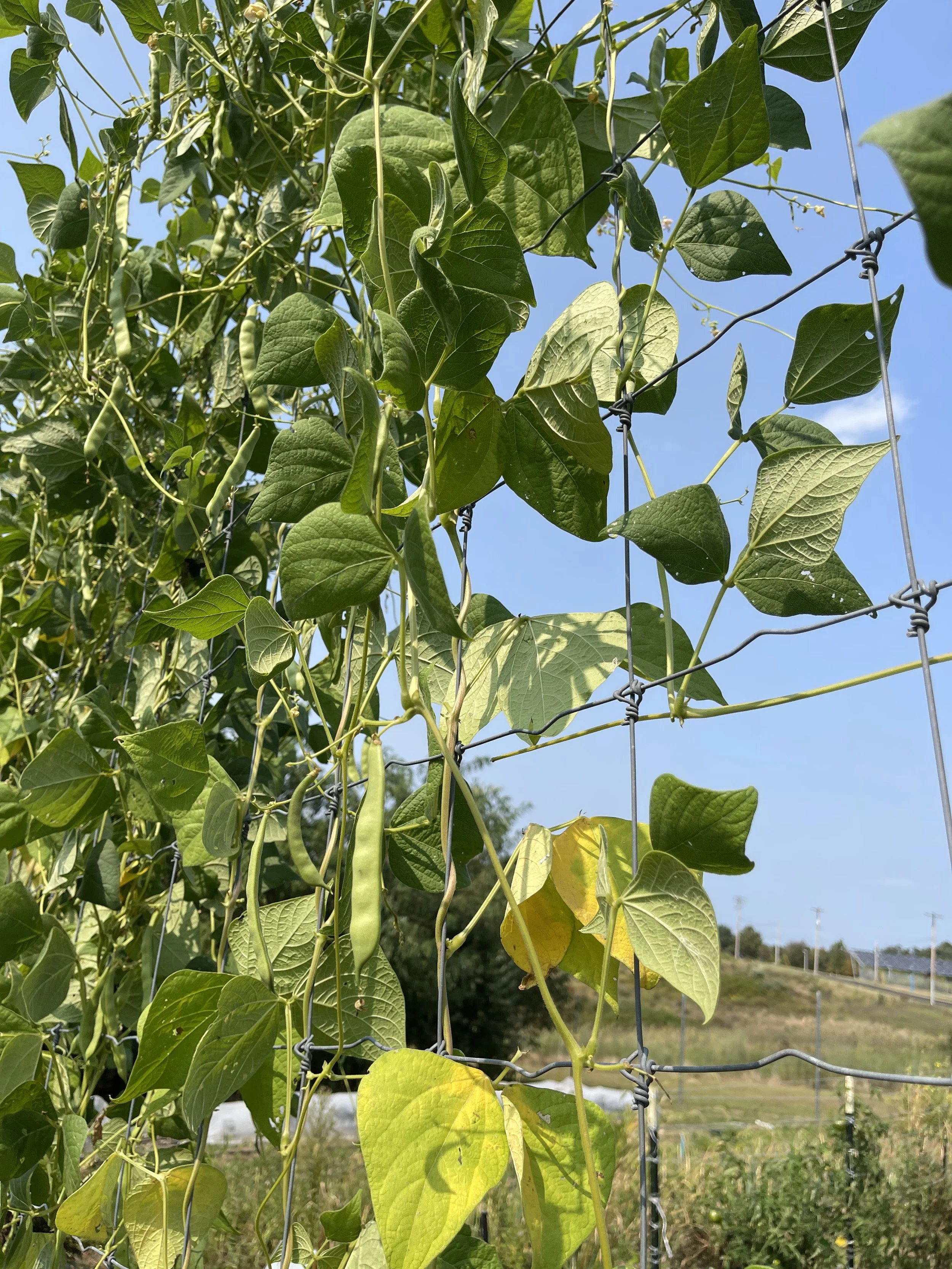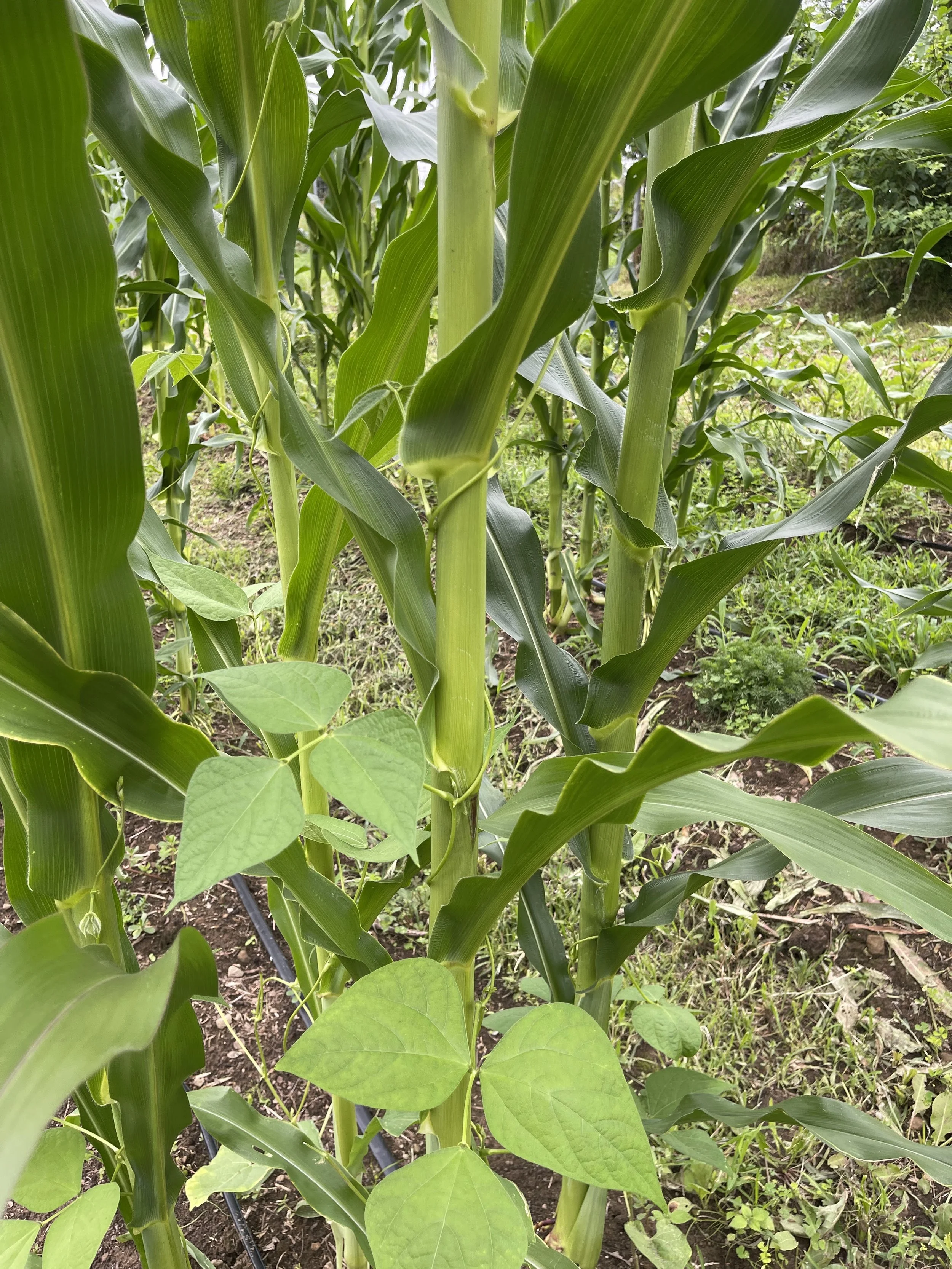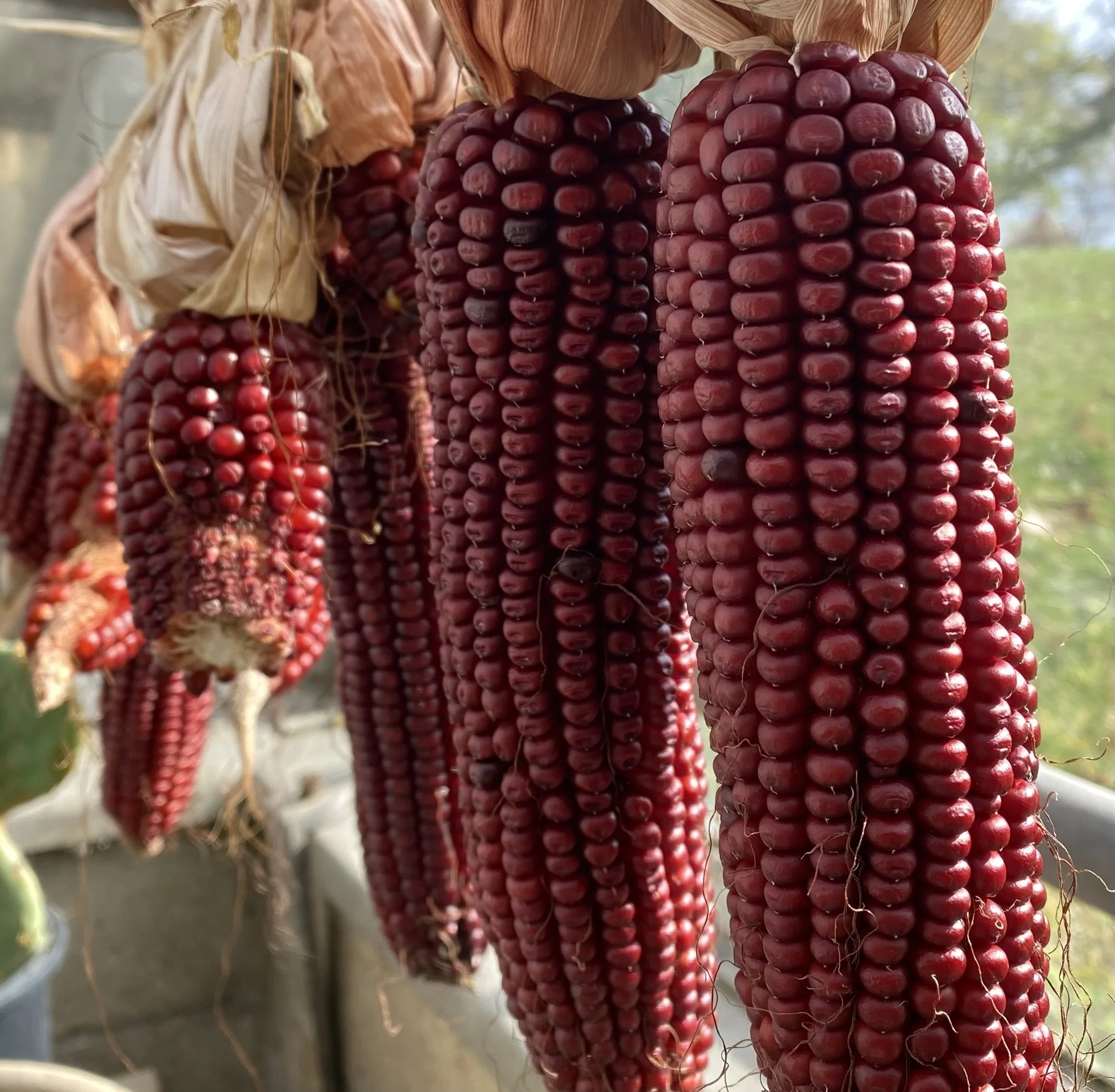Growing Heritage and Culturally Relevant Foods through Seed Saving
A row of Rittle beans climb up a fence in the ADG, using the fence as a trellis.
The Importance of Seed Saving
People have been saving seeds for as long as humans have practiced agriculture. It is a powerful tool in preserving ancestral heritage, improving crop traits and connecting with culture, identity, and history. In America, the act of saving seeds has immeasurable historical significance particularly in Indigenous and Black communities who saved seeds as a means of survival and resistance against colonization, slavery, and the destruction of crops and traditions. When taking a look at a small seed, you might not always think about the many years of stories that it carries.
Planted in the three sisters system, the Rittle beans are able to grow upwards along the corn stalk.
The Rittle Beans Story
In 2019, the farm began growing a special variety of pole bean in the Agroecology Demonstration Garden called Rittle beans. What makes these seeds special to the farm is that they are a family heirloom seed that was shared with us by a retired Chatham nursing professor and Navy veteran named Chad Rittle, whom the beans are named after.
They came into the possession of the farm when Chad came to visit Eden Hall one day for an evaluation of Dr. Chris Murakami’s class, which was taking place in the Agroecology Demonstration Garden. That day, the students talked about what it meant to be able to access culturally relevant foods. Chad shared after class that he and his family had been saving their heirloom beans for a few generations, but he was now down to his last mason jar of beans. He had recently moved from a house that had more garden space and was looking for a new place to grow the beans and ended up giving some of the seeds to Eden Hall Farm. For a few seasons now, the farm has grown the Rittle beans on tee pee trellises and as part of the three sisters plots.
Chad explained that these beans were originally from Croatia where his family is from. They are typically eaten as green beans and are often used as a part of meals during the holidays. They can also be eaten as dry beans, which offer a great texture when used to make broth and soup.
Cobbs of Bloody Butcher Corn hang by their husks to dry in the ADG Greenhouse after being harvested.
The Seed Library
The Rittle beans are now one of the seeds that are being saved within Eden Hall Farms’ seed library as part of their BRIDGES project. This project was created through a Sustainable Agriculture Research and Education USDA grant that Chatham received this past year. With the development of this collaborative seed library and establishing a cooperative multi-farm produce aggregation model, the project is working to deepen connections between Eden Hall Farm and various farms in Pittsburgh including The Hood Garden, Farmer Girl Eb, The Library Seed Farm, and Freeman Family Farms Market. Together, they aim to create a resilient and just local food system.
This year, four other seeds were saved alongside the Rittle beans: Plate de Haiti, Isla da Margarita Ali Dulce, Mammoth Sunflower, and Bloody Butcher Corn. During the summer, the Bloody Butcher Corn was planted with the Rittle beans in the ADG as part of the three sisters plot as well. The first year of seeds are being stored with Madison McLean at the Library Seed Farm. We hope to continue expanding this shared collection in the years to come!



